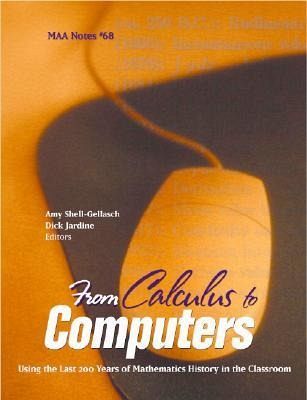Nicht lieferbar

From Calculus to Computers
Using the Last 200 Years of Mathematics History in the Classroom
Ed. by Amy Shell-Gellasch and Dick Jardine
Versandkostenfrei!
Nicht lieferbar
To date, much of the literature prepared on the topic of integrating mathematics history into undergraduate teaching contains, predominantly, ideas from the 18th century and earlier. This volume focuses on nineteenth- and twentieth-century mathematics, building on the earlier efforts but emphasizing recent history in the teaching of mathematics, computer science, and related disciplines. From Calculus to Computers is a resource for undergraduate teachers that provides ideas and materials for immediate adoption in the classroom and proven examples to motivate innovation by the reader.



